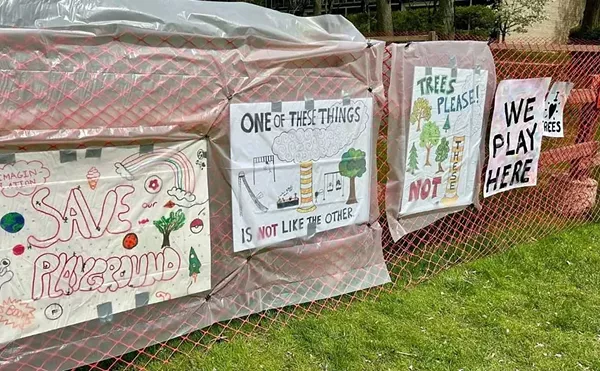
Audio By Carbonatix
[
{
"name": "GPT - Leaderboard - Inline - Content",
"component": "35519556",
"insertPoint": "5th",
"startingPoint": "3",
"requiredCountToDisplay": "3",
"maxInsertions": 100,
"adList": [
{
"adPreset": "LeaderboardInline"
}
]
}
]
How can a reporter at the nation’s largest daily newspaper get away with making up stories for a dozen years? Well, it’s much easier if bosses don’t bother investigating complaints that a reporter is making stuff up.
Last week, USA Today reported that Jack Kelley, until recently the McPaper’s star foreign correspondent, “fabricated and plagiarized stories for at least 12 years.”
Reviewing more than 1,400 stories Kelley wrote during his 21 years at USA Today, the paper found “a pattern of lies and deceit.”
Among Kelley’s fictitious clips is a January 2002 story in which he reports that the CIA and U.S. Special Forces searching caves and safe houses in Afghanistan had found documents linking two Chicago-based Islamic charities to al Qaeda. One of those charities was Global Relief Foundation (GRF), which was co-founded by Rabih Haddad, an imam who was arrested in Ann Arbor shortly after 9/11 for a visa violation. Haddad was detained for 19 months before his deportation last year.
GRF was raided and shut down on Dec. 14, 2001, the day of Haddad’s arrest.
Kelley’s story claiming GRF links to al Qaeda hit the streets about six weeks later.
Last week USA Today reported that soon after Kelley’s story ran, GRF attorney Roger Simmons contacted the paper challenging the reporter’s claims. USA Today told Simmons “that the newspaper would neither correct nor retract the story,” according to last week’s newspaper account.
But it didn’t end there.
In a letter dated Jan. 31, 2002, and addressed to Kelley and his managing editor, Hal Ritter, Simmons demanded a retraction and apology, stating, “I am confident that you maliciously and recklessly misstated the facts.” Simmons went on to say that all the paper had to do was contact the U.S. Attorney in Chicago, who, according to Simmons’ letter, was “utterly shocked” by Kelley’s allegations, and was willing to confirm there was “no foundation for the story.”
Simmons says the paper’s attorney responded by saying “they would not apologize, they would not inquire or investigate and they stood by their writer.”
Oops.
Simmons complained again in March 2004, after the paper reported “strong evidence of plagiarism and fabrication in many stories written by Kelley.”
This time the paper was willing to do what it should have done the first time around: USA Today asked the U.S. Attorney’s Office in Chicago to review the court file to determine if what Kelley reported was true. According to USA Today, Randall Samborn, spokesman for the Chicago prosecutor, said, “There is no public court record, either of documents that were found in caves or safe house of Afghanistan, or that discuss the existence of such documents, as he [Kelly] suggested in the Jan. 30, 2002, story.”
Simmons, who represents GRF in a lawsuit against the government over the closure of GRF based on secret evidence, is both relieved and appalled.
“It transcends the whole concept of libel,” says Simmons, who can’t sue since the statute of limitations has expired.
Kelley resigned in January. Managing editor Ritter resigned last week. And we are resigned to the fact that too many editors are forgetting that adage that begins, “If it’s too good to be true …”
Contact News Hits at 313-202-8004 or NewsHits@metrotimes.com




